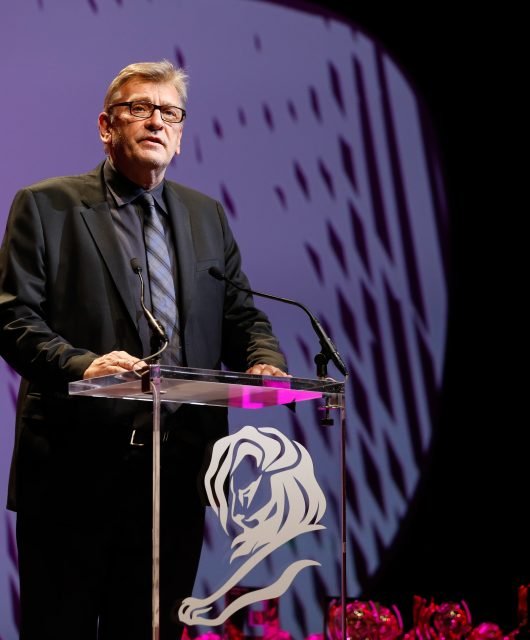Amusing Audiences With Creativity: Q&A With Interbrand’s Borja Borrero
Brands of today need to group their efforts on delivering the best ‘return on creativity’ to fuel their performance. It’s impossible for a brand to rise above the noise without creative strategies to help them shine. The current renaissance of technology has created huge challenges for brands, but they have also created a playground for creativity. The Brandberries has exclusively interviewed Borja Borrero , Executive Creative Director EMEA & LatAm of Interbrand, to get his insights on how brands can leverage creativity.
BB: Interbrand has been nurturing global brands with creativity for more than 40 years now. In your opinion, what defines “Creativity”?
 Borja: Creativity needs to serve a purpose and for brands this purpose is to engage with the customers and create loyal relationships with them and their preference. The result may be selling a product or service or merely have an emotional and meaningful connection with the client. Creativity in branding has to answer a strategic brief. To me, as a brand consultant, creativity is the art of combining ideas to surprise, amuse and seduce audiences to commercially engage with them.
Borja: Creativity needs to serve a purpose and for brands this purpose is to engage with the customers and create loyal relationships with them and their preference. The result may be selling a product or service or merely have an emotional and meaningful connection with the client. Creativity in branding has to answer a strategic brief. To me, as a brand consultant, creativity is the art of combining ideas to surprise, amuse and seduce audiences to commercially engage with them.
BB: In the era we live in, everything is moving at the speed of light, Brands are constantly in a battle to find and unlock creative potential. How should brands view “creativity”? When can creativity be a real brand differentiator?
Borja: As techniques improve and industry standards reach an unprecedent level of quality, products and services tend to get commoditized. In the past, brands could differentiate themselves through pragmatic advantages but more and more we see brands moving into the emotional arena. As this happens, creativity is now key to shape a narrative that feels relevant for existing and potential audiences. Creativity feels more and more important as audiences demand to be emotionally engaged. It’s the way we can hold a long-lasting relationship with clients in a scenario where everything changes and evolves so quickly.
BB: Pairing creativity with data will lead to unique and unforgettable brand experiences. In the information age we are living in, how can brands connect the dots between data and creativity?
Borja: The amount of data brands have now about their customers is an amazing opportunity to wow clients using creativity. Shaping messages, identities and expressions in general around the specific profiles of customers is the best way to surprise and engage with them. This is a new scenario and an opportunity that brands are leveraging more and more. When we talk about brick & mortar then the opportunity gets 100% real and the five senses come into play. Data also helps to anticipate what the client desires and needs – when we overlay creativity on top of this, the result provides highly engaging experiences.
BB: Does creativity, alone, sell? Do you believe in the correlation between outstanding creative success and commercial success?
Borja: It can sell if it is properly directed. There are many ways in which a brand can be creative but just one that is meaningful to its key audiences. Creativity can capture the attention, amuse, entertain or surprise but the key word is to “engage” with the customer and activate him or her commercially. As for the second question; not necessarily. I’ve taken part in judge panels for prestigious awards and I’ve seen many great ideas that don’t convert (not necessarily commercially). The magic happens when outstanding creativity connects with an unmet need of customers so they are “moved”.
BB: The rise of the digital age has revamped how brands are leveraging creativity to drive brand growth, making the audience more intrigued. How can brands use such trends to drive sales?
Borja: I think great brands are becoming broadcasters on their own. Each one has its own speech, set of beliefs and channels to communicate and engage. When you hold a long-lasting relationship with clients the chances of converting into sales are higher if you shape relevant messages for them. It is key to constantly feed these channels with initiatives and innovations that build admiration and trust among their fan base.
BB: Creativity is a way of thinking not a department and every endeavor can be improved by creative thinking. Consequently, believing that creativity resides in the creative department of ad agencies and that media people, data people or CRM people can’t be creative, is questionable. Please comment.
Borja: Absolutely. Creativity can be applied to the most technical profession, not only advertising or graphic design. Nowadays we live in an era where creativity is gaining a more important role in the way we work and this is because we all like to be emotionally moved. Design thinking is now all over the place and its foundations are applying logic and creative solutions to processes to facilitate and enhance experiences that better engage with audiences.





